History of Aviation 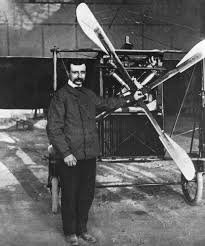
Aviation is a transformative aspect of human progress that has altered the course of history, bringing nations closer together, advancing technology, and reshaping the landscape of warfare, commerce, and travel. From the mythological tales of flying to the creation of modern airliners, aviation’s journey is one of both inspiration and innovation. This history spans centuries, and its development is punctuated by key moments of triumph, struggle, and revolution.
Early Dreams and the Mythology of Flight
The idea of flight has existed in human imagination for millennia. In ancient mythology, stories of humans soaring through the skies appeared in many cultures. In Greek mythology, Icarus and his father Daedalus constructed wings made of feathers and wax, but Icarus flew too close to the sun, melting the wax and plunging to his death. This story underscores both the allure and the danger of flight, themes that would persist throughout the history of aviation.
In the 9th century, the Arabian inventor Abbas ibn Firnas is often credited with attempting one of the first recorded flights. He constructed a rudimentary glider-like device and reportedly flew a short distance, though his crash landing led to injury. The dream of human flight lingered for centuries but remained elusive.
The Age of Scientific Inquiry: The Renaissance to the 18th Century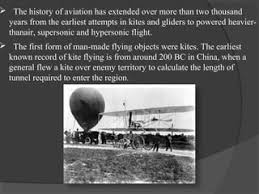
The Renaissance period marked a surge in scientific exploration and experimentation, which extended to the question of flight. Visionaries like Leonardo da Vinci, who lived in the late 15th and early 16th centuries, conceptualized many ideas for flight. His famous sketch of a flying machine, which combined elements of modern-day gliders and helicopters, was never built, but it showcased his understanding of aerodynamics and lift.
In the 17th and 18th centuries, the study of flight began to take on a more scientific approach. In 1670, English scientist Robert Hooke published The Attempt to Prove the Motion of the Earth by Experiments, in which he speculated on the possibility of human flight. Further experimentation occurred with the use of balloons and kites, especially in the 18th century.
The First Powered Flight: Balloons and Airships
The first successful attempts at flight came not in the form of fixed-wing aircraft, but rather in the form of balloons. The Montgolfier brothers, Joseph-Michel and Jacques-Étienne, are credited with inventing the first practical hot-air balloon. In 1783, they successfully launched a 3,000-meter-high balloon carrying a sheep, a duck, and a rooster, demonstrating that flight was possible without the aid of wings. Later that year, the first manned flight took place when Jean-François Pilâtre de Rozier and François Laurent d’Arlandes ascended into the air in a Montgolfier balloon.
The development of airships, or dirigibles, followed ballooning. In 1852, French engineer Henri Giffard built the first successful dirigible, powered by a steam engine. Giffard’s 44-meter-long craft traveled 27 kilometers at 8 kilometers per hour, proving that controlled flight was possible, albeit at low speeds and with limited maneuverability.
The Wright Brothers: Birth of Modern Aviation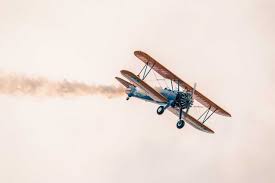
The breakthrough in powered flight came in the early 20th century, thanks to the work of American inventors Orville and Wilbur Wright. The Wright brothers were both mechanics and engineers with an interest in flight. Their key innovation was the development of control systems that allowed for sustained, controlled flight.
In 1903, after years of experimentation, the Wright brothers achieved the first successful powered flight on December 17, 1903, at Kitty Hawk, North Carolina. Their aircraft, the Wright Flyer, was a biplane powered by a 12-horsepower engine. It flew for 12 seconds, covering 36.5 meters. This achievement marked a pivotal moment in history, as it demonstrated that flight was not just a dream but a reality.
Following their success, the Wright brothers continued to refine their designs, achieving longer flights and more reliable control. In 1905, they built the Wright Flyer III, which was capable of sustained flight for over 30 minutes and reached speeds of 50 miles per hour. This marked the beginning of modern aviation.
The Golden Age of Aviation (1910s–1930s)
The years following the Wright brothers’ success saw rapid advancements in aviation technology. In the 1910s, aviators like Louis Blériot and Charles Lindbergh helped popularize the idea of air travel and demonstrate its potential.
In 1919, British aviators John Alcock and Arthur Brown made the first successful nonstop transatlantic flight from Newfoundland to Ireland, proving that long-distance flights were becoming a reality. In 1927, American pilot Charles Lindbergh made his famous solo nonstop flight from New York to Paris, a distance of 5,800 kilometers. His aircraft, the Spirit of St. Louis, was a custom-built monoplane that captured the world’s imagination and made Lindbergh an international hero.
The 1920s and 1930s also saw the development of larger, more reliable commercial aircraft. Airlines began to form, and air travel became an increasingly important part of the global economy. Pan American Airways, founded in 1927, was a pioneer in transoceanic air travel, and the introduction of aircraft like the Boeing 247 and the Douglas DC-3 helped solidify commercial aviation as a viable mode of transportation.
World War I and World War II: The Military and Strategic Use of Aviation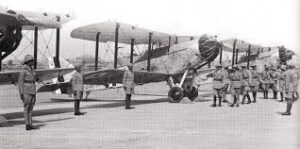
World War I marked the first major conflict in which airplanes played a critical role. Initially, planes were used primarily for reconnaissance, but as the war progressed, fighter aircraft, bombers, and air tactics were developed. The famous “Red Baron” of Germany, Manfred von Richthofen, became a symbol of aerial combat, and air battles over the Western Front became a significant aspect of the war.
World War II, however, was the conflict that truly defined the role of aviation in warfare. During this period, aircraft became even more advanced in both design and function. The development of strategic bombers, such as the Boeing B-17 Flying Fortress and the Avro Lancaster, allowed for large-scale bombing campaigns over enemy cities and infrastructure. Fighter aircraft like the Supermarine Spitfire and the P-51 Mustang played crucial roles in aerial combat, while aircraft carriers revolutionized naval warfare.
The culmination of aviation’s role in World War II was the use of bombers to deliver atomic bombs on the Japanese cities of Hiroshima and Nagasaki in 1945, marking a new and terrifying chapter in the history of aviation and warfare.
Post-War Advances and the Rise of Commercial Aviation (1940s–1960s)
After World War II, the advancements made in military aviation technology were adapted for civilian use. The development of the jet engine, pioneered by engineers such as Frank Whittle in Britain and Hans von Ohain in Germany, revolutionized air travel in the postwar years.
In the 1950s and 1960s, commercial aviation took off with the introduction of the first commercial jet airliners. The British de Havilland Comet, which first flew in 1949, was the first commercial jet airliner, though its early models suffered from structural failures. More successful was the American Boeing 707, introduced in 1958, which offered faster and more comfortable air travel over long distances.
The 1960s also saw the advent of supersonic flight, with the Concorde (a joint British-French project) being developed as a commercial supersonic airliner. Although it was a marvel of technology, the Concorde’s high operating costs and environmental concerns led to its eventual retirement in 2003.
The Modern Era of Aviation (1970s–Present)
In the 1970s, the Boeing 747, known as the “Jumbo Jet,” revolutionized air travel by significantly increasing passenger capacity and reducing costs per mile. It became the most iconic commercial airliner, symbolizing the mass movement of people across the globe. The wide-body jet also helped make international travel more affordable and accessible to the public.
The 1980s and 1990s saw continued advances in avionics, materials, and aerodynamics. The development of composite materials allowed for lighter, more fuel-efficient aircraft, and the increasing sophistication of flight control systems made aircraft safer and easier to fly. The introduction of the Airbus A320, for instance, in 1988, was one of the first airliners to be equipped with a fly-by-wire control system, which uses electronic signals instead of traditional mechanical linkages.
The 21st century has brought the rise of new technologies, such as unmanned aerial vehicles (UAVs), also known as drones, which are used for a wide range of purposes from military operations to commercial delivery services. The pursuit of greener aviation has led to the development of hybrid-electric and fully electric aircraft, with companies like Boeing and Airbus exploring the potential for zero-emissions flight.
The Future of Aviation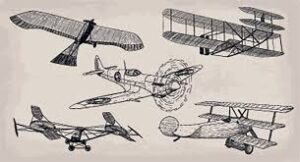
The future of aviation is full of exciting possibilities. With the development of supersonic commercial aircraft, space tourism, and advancements in artificial intelligence and automation, air travel is poised to become faster, more efficient, and more accessible. Companies such as SpaceX and Virgin Galactic are working on space tourism, while electric aircraft may pave the way for more sustainable flight options.
Aviation continues to evolve, building on over a century of innovation and exploration. What started as a dream of human flight has led to an interconnected world where millions of people fly each day across the globe. As we look to the future, the next chapter in aviation history promises to be just as thrilling as the past.
